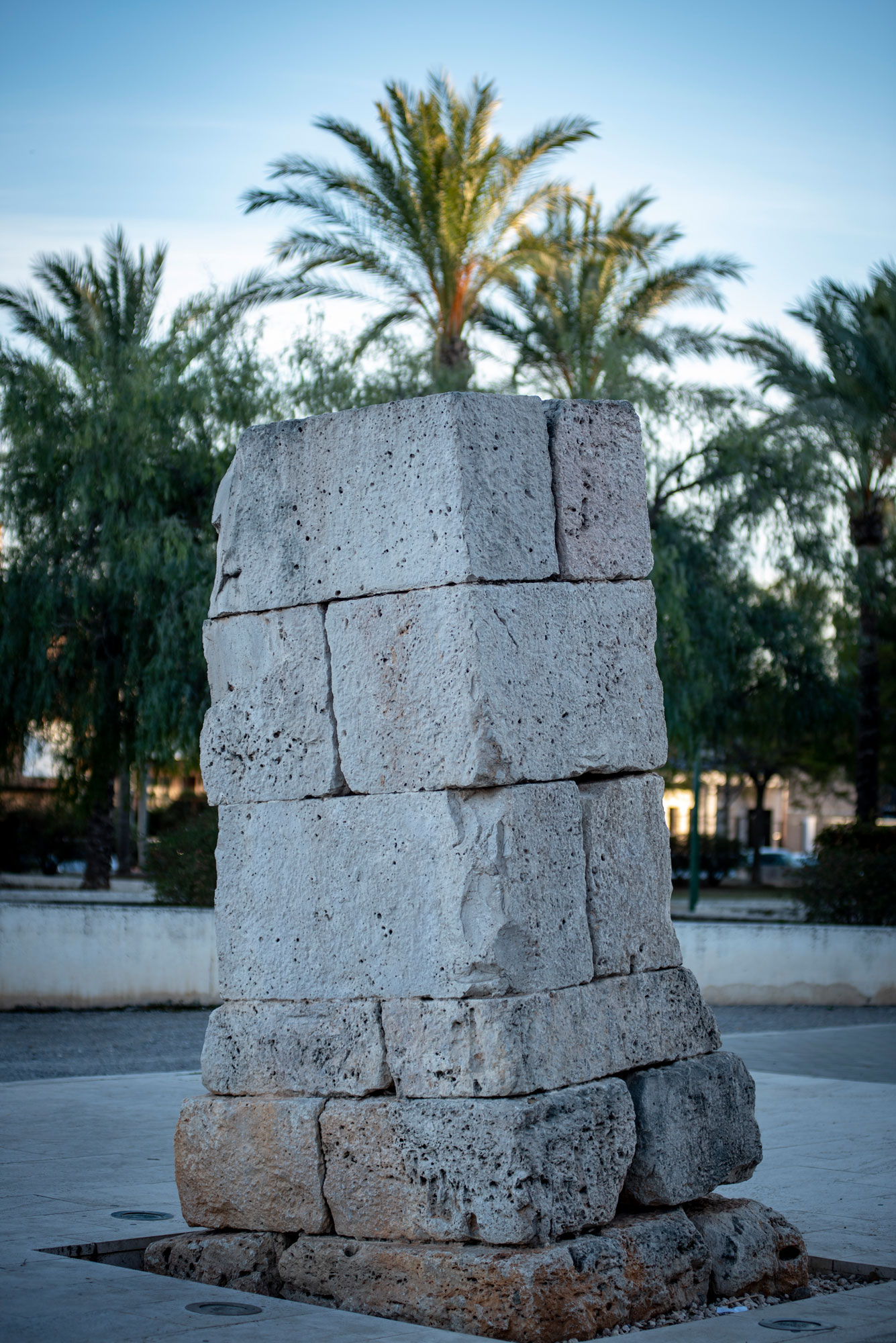Archaeological sites
It is found at the foot of the Monastery of Saint Michael, some 400 metres from Llíria town centre and it stretches along one side of the Saint Michael hillside. It preserves remains of the access road dug into the rock. The houses are built with adobe walls, on stone foundations. They were either ground floor buildings or they had several floors, communicated by means of stairs.

The Tossal de Sant Miquel is known worldwide for its ceramics painted with figurative scenes which represent different aspects of the Iberian society of Edetania. It is a large collection of archaeological pieces of varying shapes and sizes decorated with inscriptions and paintings that show the modus vivendi of the aristocratic class of that period: war scenes, ritual dance and hunting scenes that help to understand and interpret the society of that era. This material is on exhibition at the Prehistoric Museum of Valencia and the Archaeological Museum of Llíria. El Vaso de los Guerreros and el Khalatos de la Danza are worth noting.
The settlement is abandoned as a result of the Roman conquest during the 2nd century BC.
MONT-RAVANA
Iberian settlement. 6th century BC – 2nd century BC. Declared BIC (Asset of Cultural Interest)
Mont-Ravana is a settlement from the Iberian era (between the 5th and 3rd century BC), medium sized, and located around the Tossal de San Miguel, the ancient Edeta, some 8 km from the town of Llíria. It has a surface area of 5,000 m2 and preserves a large part of the walled area.
Approximately one-fifth of the settlement has been excavated. Several productive departments and several houses are preserved. The floors are generally regular although they adapt to the nature of the terrain. The walls are dry limestone walls, reaching heights of about two metres in some parts.
It is a particularly agricultural settlement, related to working the land. It preserves part of an industrial complex comprising areas for milling and wine presses, and part of the constructive remains of pools related to the process of winemaking.
Among the ensemble of archaeological pieces recovered, it is worth mentioning the sculpture of a bull which is on exhibition at the Archaeological Museum of Llíria (MALL).
CASTELLET DE BERNABÉ
The layout is based on a central street and on either side there are houses and spaces for production built in dry stone and adobe. They were either ground-floor buildings or they had two floors with exterior staircases alongside the front walls.
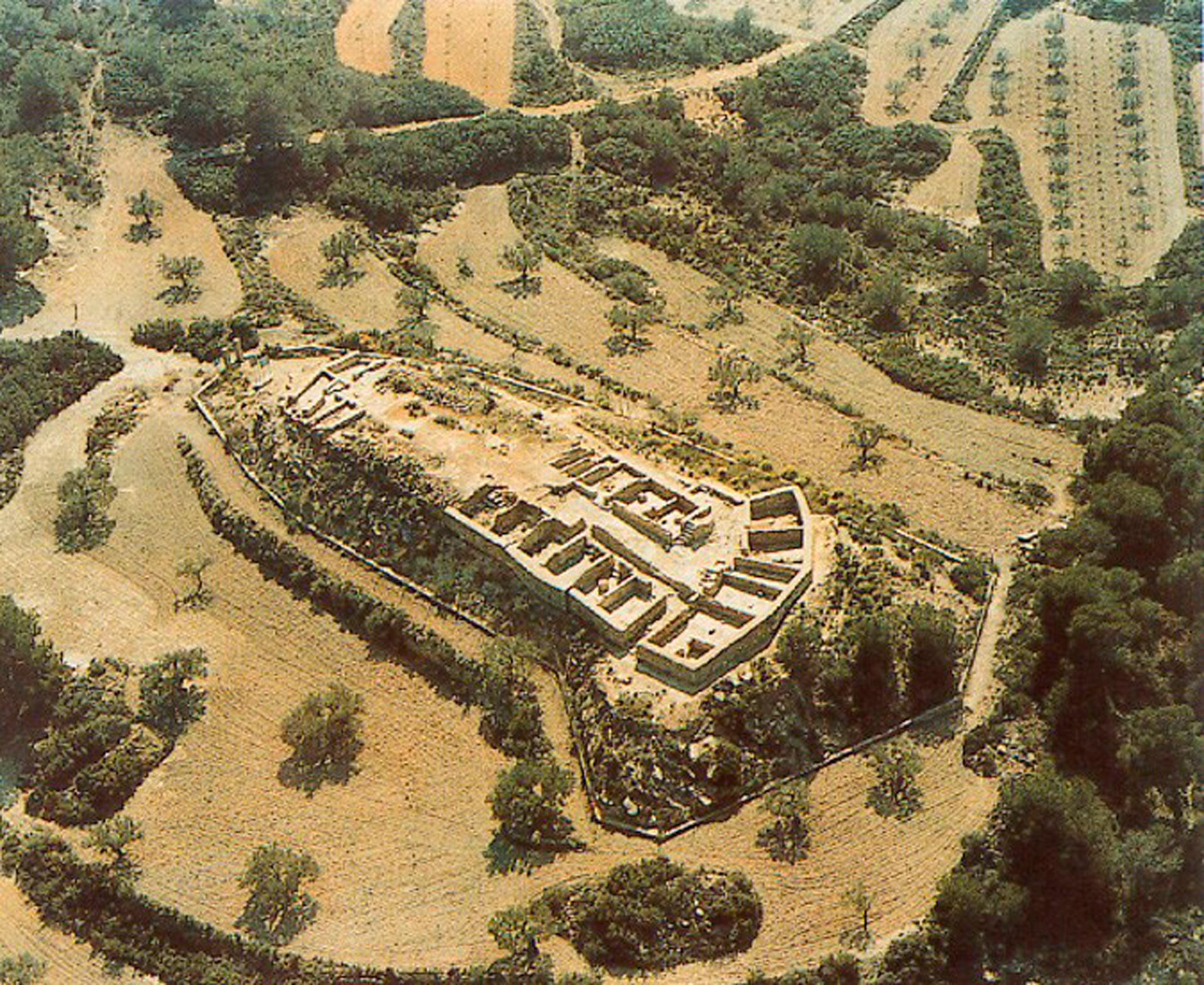
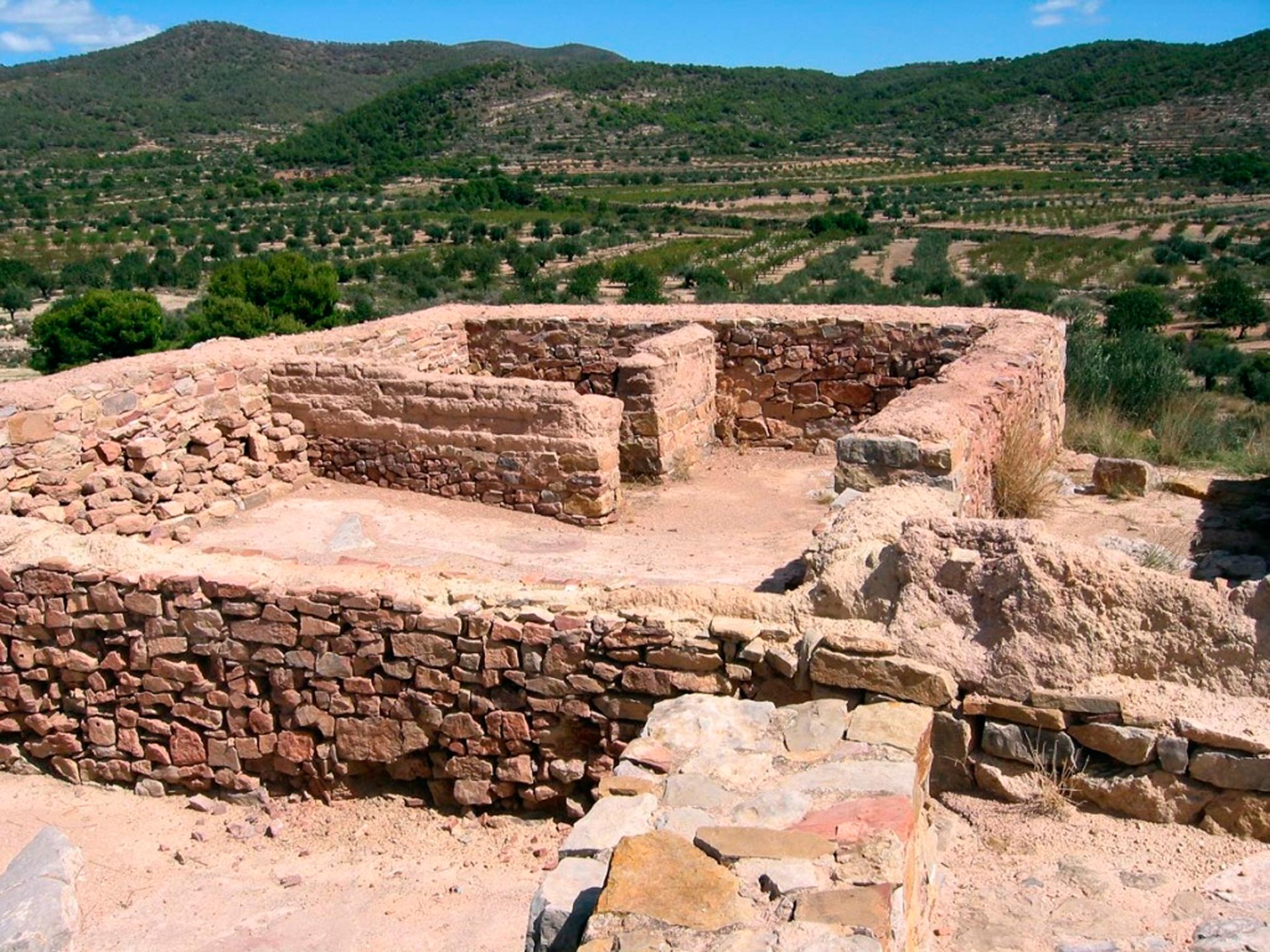
Three different sectors are identified within the hamlet: the central street; the aristocratic family residence, owner of the enclosure and the surrounding land; and the living quarters and departments where agricultural related activities were carried out such as the storage of cereals or the production of wine, oil and honey, and activities related to mining such as silver mining.
Some of the archaeological pieces recovered are exhibited at the Prehistoric Museum of Valencia and at the Archaeological Museum of Llíria (MALL).
ROMAN MAUSOLEUMS
Two funerary monuments that formed part of the ancient necropolis of Edeta (Llíria) are preserved, situated alongside one of the main entrances to the Roman town.
On the threshold at the entrance to the funerary enclosure there are four stone slabs with the Latin inscription P. CLODIVS EVTYCHVS SIBI ET CLODIAE NATALI VXORI CARISSIMAE which means «P. Clodio Eutico built it for himself and for Clodia Natalia, his dear wife».
The front wall of the first monument is decorated with fluted pilasters and an inner chamber with two continuous benches where the Parentalia or relatives’ parties were held.
The second monument belongs to the group of tower-shaped tombs and preserves a stone slab, with a central hole for the libations, that covers a cubic cavity where the cremations and funeral paraphernalia were deposited.
An interpretative audiovisual called “Eutico en Busca de los Campos Elíseos – Eutychus in search of the Elysian Fields” is screened in the same historical space.
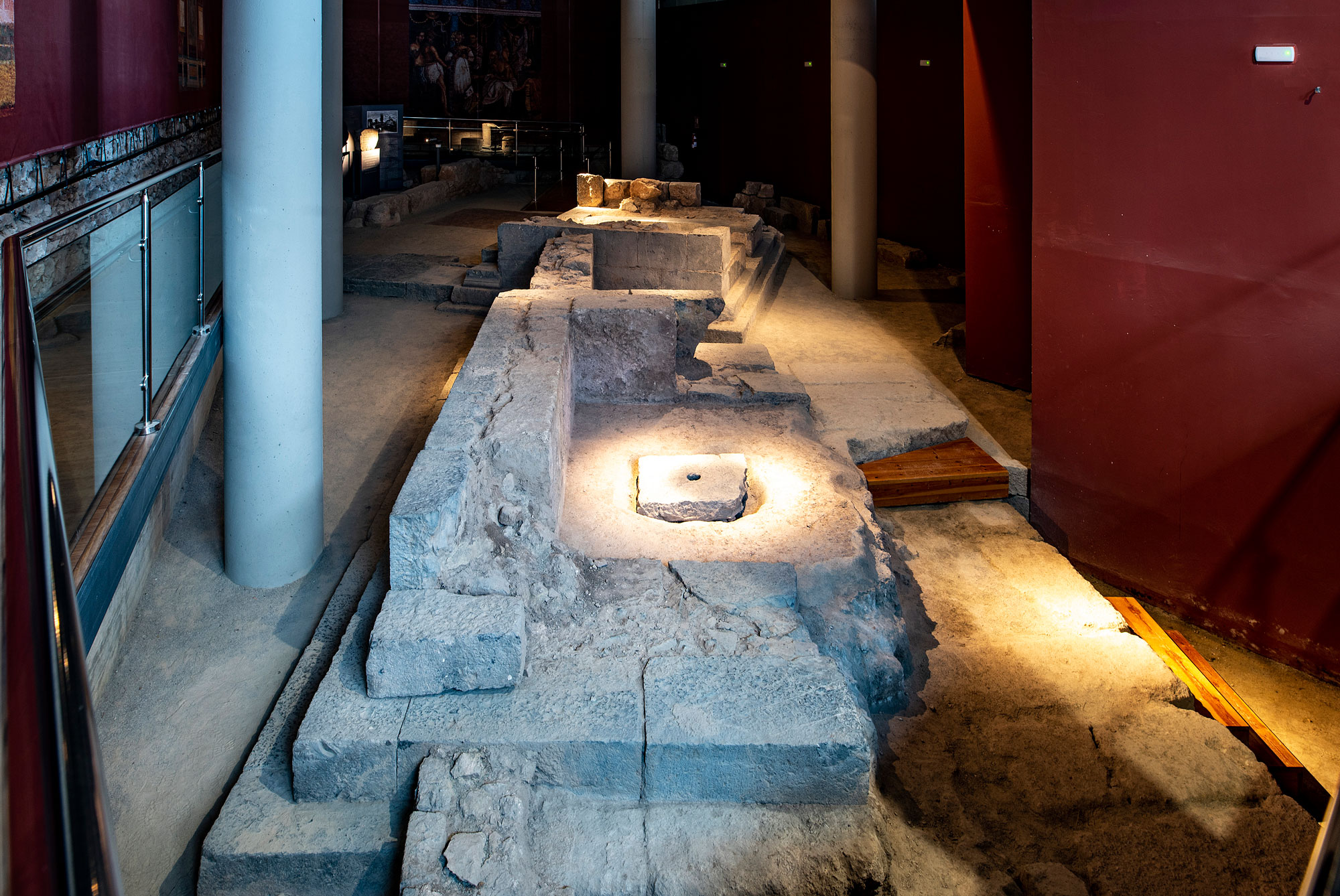
ROMAN THERMAE OF MURA
The preserved remains formed part of a large public spa complex. Two parts are differentiated: a religious area organised around an oracular sanctuary and a large double spa complex.
The oracular sanctuary is the place where prophecies and divinations were made. It is made up of a Greek-style temple with a portico at the entrance and it preserves two enclosed areas, one for votive offerings (pronaos), and another equipped with omphalos for making the prophecy (naos). It also has several complementary spaces such as a farm for raising the animals that were slaughtered during the ceremonies, an orchard for growing the plants used in the liturgies and the sacristy of the fortune tellers and priests.
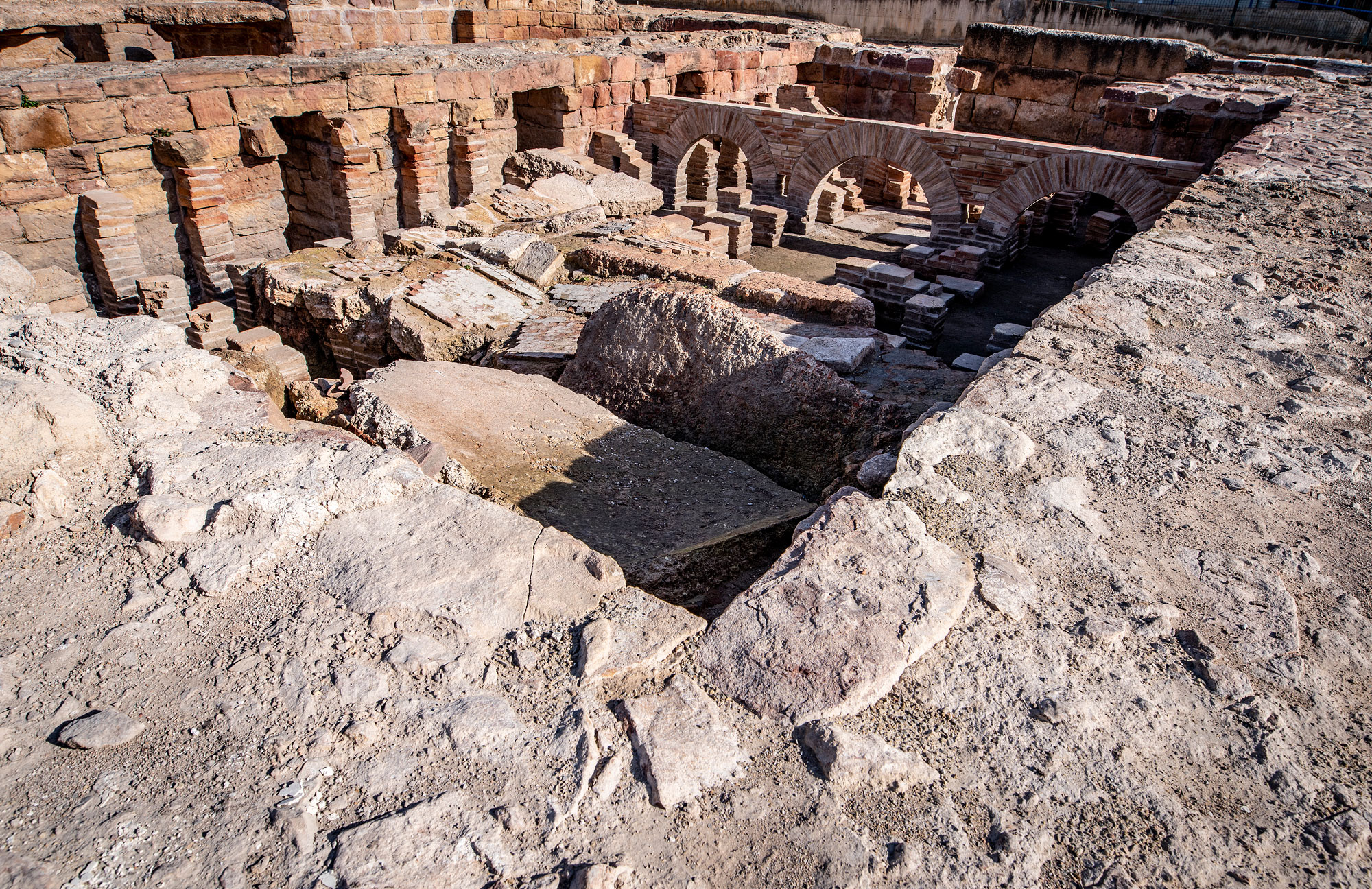
The spa areas form a complex of an entertaining and curative nature made up of diverse outbuildings and non-residential establishments that took advantage of the therapeutic properties of the water flowing from Saint Vincent’s spring, where in Roman times the nymphaeum or Temple of the Nymphs was found. The complex is made up of male and female thermae. Both have an entrance-reception (tabernarum), a place for meeting and relaxation (basilica thermarum), cold-water hall (frigidarium), warm-water hall (tepidarium) and hot-water hall (caldarium), and a space for doing sport (palestra) equipped with a pool for swimming (natatio).
The promoter of this architectural work was possibly Marco Cornelio Nigrino Curiatio Materno. Businessman, politician and Roman soldier, born in Edeta (Llíria) in 40 AD, who held high-ranking positions of responsibility within the Empire and was a candidate for the Imperial throne.
During the Later Roman Empire the thermae were abandoned, to be later occupied during the Byzantine and Visigoth period, probably as a Paleochristian monastery until the mid 7th century AD.
An interpretative audiovisual called “El Sueño edetano de Nigrino – Nigrino’s Edetan Dream” is screened in the same historic space.
MOLLÓ DEL PLA DE L’ARC
El Molló del Plá de L´Arc was until recently one of the most representative monuments of the Roman town of Edeta. We have information on this construction that dates back to the 16th century. In 1806, the French historian, A. de Laborde did an engraving with some added data, which corresponds to what is preserved to this day.
It was part of a large semicircular arched gateway that opened onto an important public space or to the town of Edeta itself, governed by Latin law.
A masonry pillar is preserved made of large limestone blocks carved with an ornamental moulding along two of its sides.
There is a clear parallel between the Arc de Cabanes and el Pilar de Llíria or Molló del Pla de l´Arc, generally considered to be a pillar or base of a Roman arch. At present, recent research suggests that it is a corner or angle of a much larger construction, on which two walls would converge.
This element was built, without a doubt, during the Roman era, probably towards the end of the 1st century AD.
